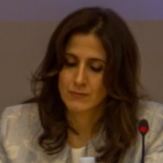The Digital Transformation of Healthcare
A special issue of Digital (ISSN 2673-6470).
Deadline for manuscript submissions: closed (20 October 2023) | Viewed by 2236
Special Issue Editors
Interests: biomedical signal processing; clinical engineering; image processing
Special Issues, Collections and Topics in MDPI journals
Special Issue Information
Dear Colleagues,
Digital Transformation in Healthcare is the positive impact of technology in healthcare. The healthcare industry is facing the third wave of IT digital technologies with implications so profound analysts believe it is a new era of global computing. Indeed, for all organizations, digital transformation will be galvanized by foundational technologies such as mobility, Internet of Things (IoT), Big Data and Unified Computing (UC).
Thanks to technology, patients get better treatment with virtual reality tools, wearable medical devices, telehealth, and 5G mobile technology. Doctors, on the other hand, can streamline their workflows using artificial intelligence-powered systems.
Nowadays, a numerous scientific community is involved in such studies and, even though many conferences on digital health applications take place regularly, there is room for further initiatives. This open-source Special Issue with cheap publication costs wishes to provide a good opportunity for presenting research results that are immediately readable and usable by other researchers.
The Special Issue aims at collecting recent research on all the below-listed topics. Review papers are also welcome.
Topics of interest include (but are not limited to):
- Electronic and Mobile Health (eHealth, mHealth)
- Internet Health Care and Telemedicine
- Health Information Systems
- Health Informatics
- Personalized Medicine
- Medical Data Systems
- Medical Device Interoperability
- Software as a Medical Device (SaMD)
- Wireless/wearable Medical Devices
- Biomedical Engineering
- Connected Health
- Genomics and Personal Genetic Information
- Wellness and Prevention
- Gerontology and Social Care Services
- Patient Accessibility
- Advanced Analytics and Artificial Intelligence in Medicine
- Geographical Information Systems in Healthcare
- Big Data Analytics in Health Applications
Prof. Dr. Dimitrios Dionisios Koutsouris
Dr. Athina Lazakidou
Guest Editors
Manuscript Submission Information
Manuscripts should be submitted online at www.mdpi.com by registering and logging in to this website. Once you are registered, click here to go to the submission form. Manuscripts can be submitted until the deadline. All submissions that pass pre-check are peer-reviewed. Accepted papers will be published continuously in the journal (as soon as accepted) and will be listed together on the special issue website. Research articles, review articles as well as short communications are invited. For planned papers, a title and short abstract (about 100 words) can be sent to the Editorial Office for announcement on this website.
Submitted manuscripts should not have been published previously, nor be under consideration for publication elsewhere (except conference proceedings papers). All manuscripts are thoroughly refereed through a single-blind peer-review process. A guide for authors and other relevant information for submission of manuscripts is available on the Instructions for Authors page. Digital is an international peer-reviewed open access quarterly journal published by MDPI.
Please visit the Instructions for Authors page before submitting a manuscript. The Article Processing Charge (APC) for publication in this open access journal is 1000 CHF (Swiss Francs). Submitted papers should be well formatted and use good English. Authors may use MDPI's English editing service prior to publication or during author revisions.





